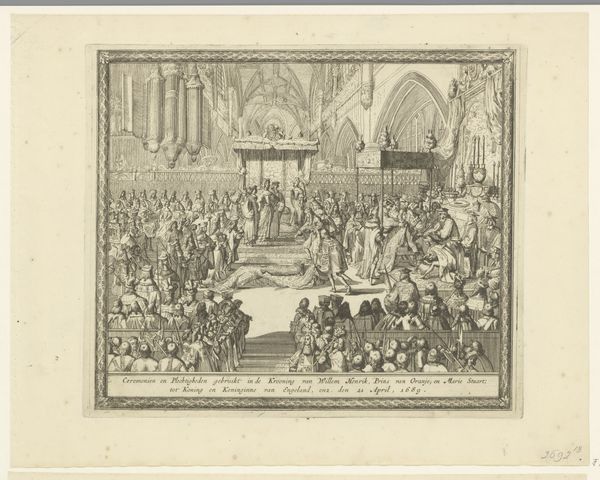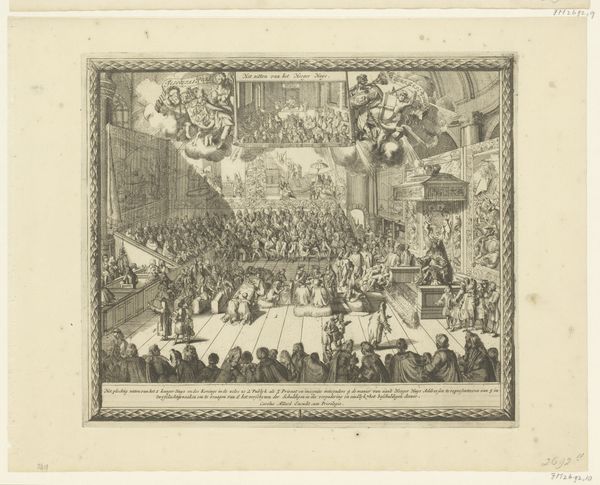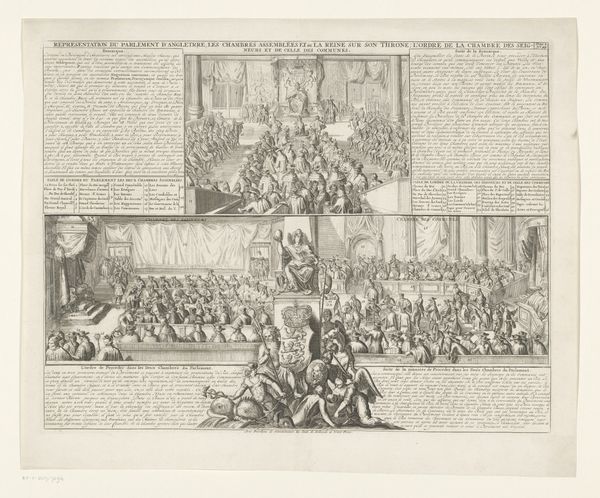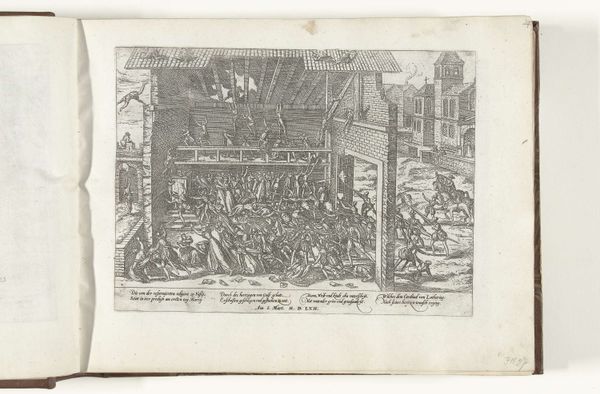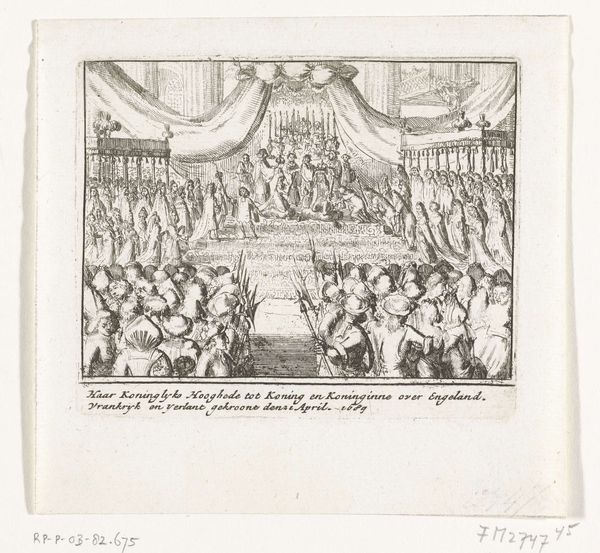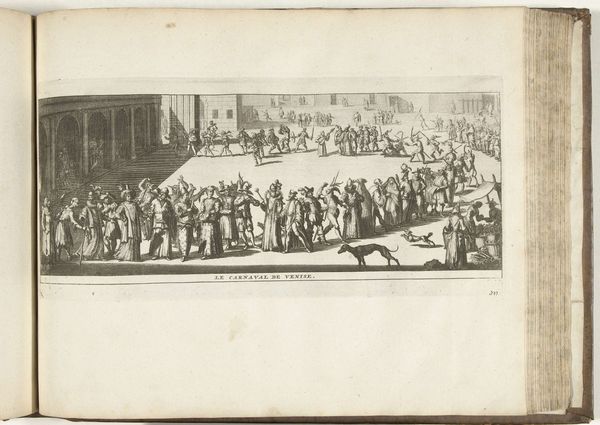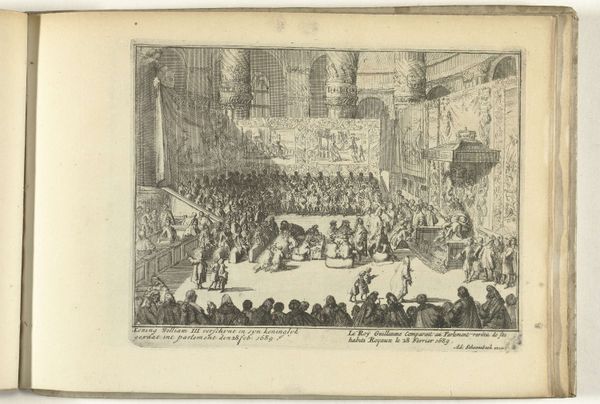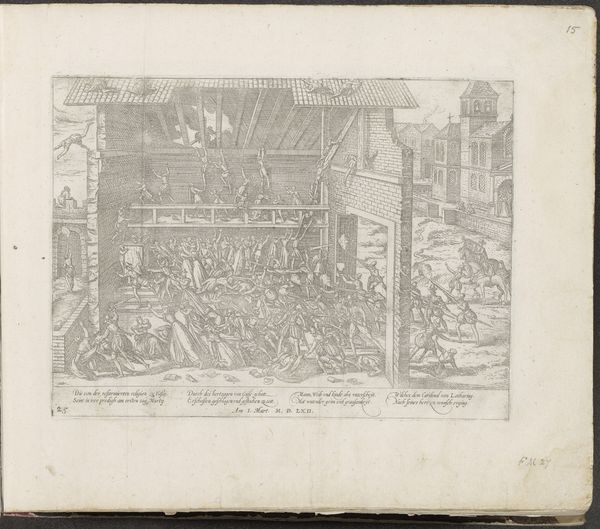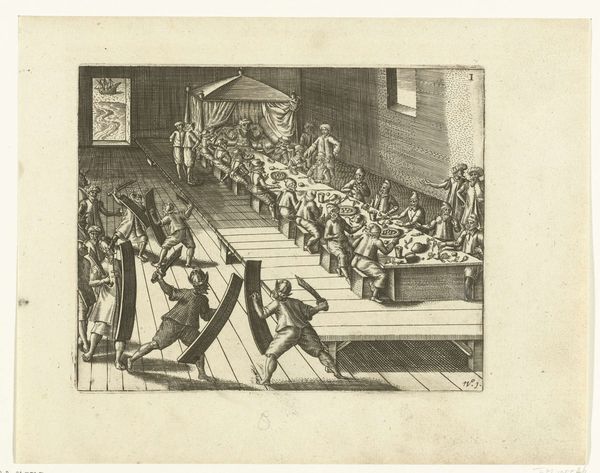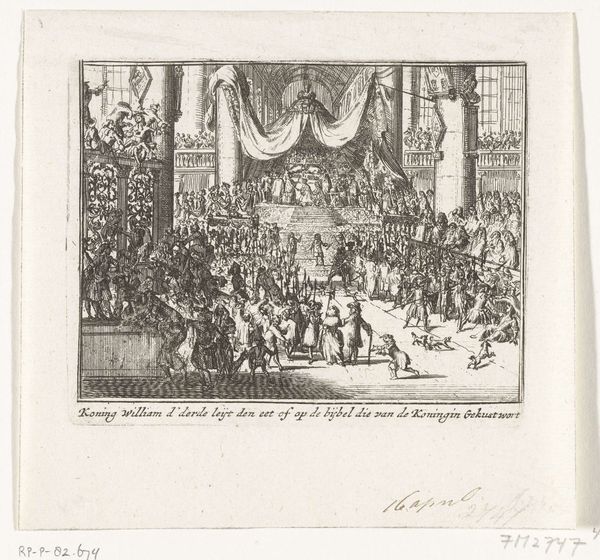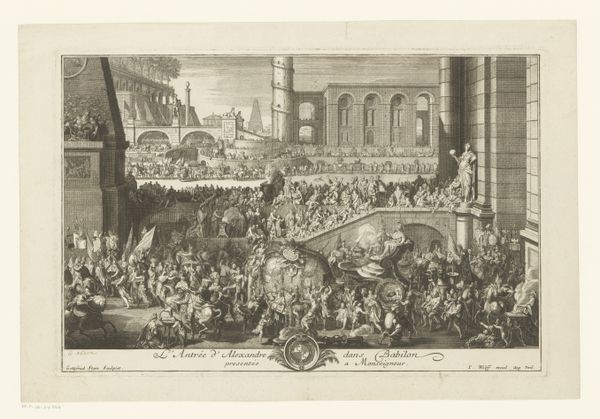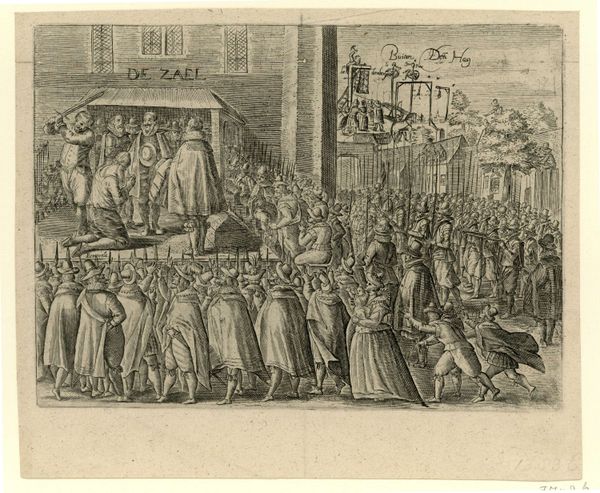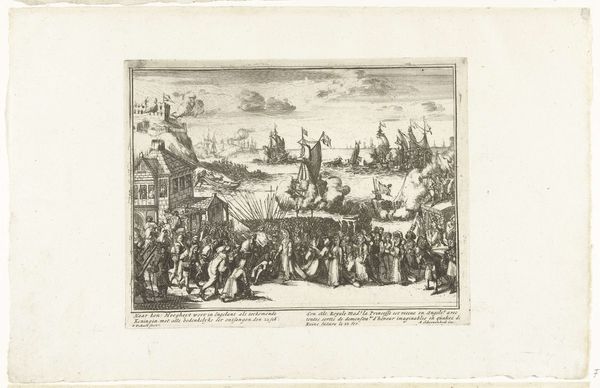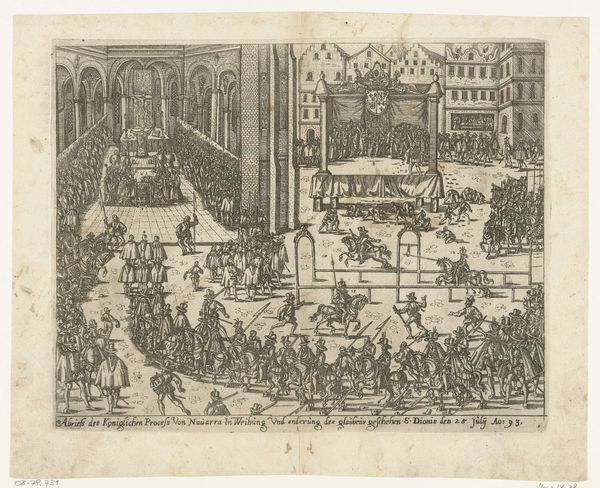
print, etching, engraving
#
baroque
# print
#
etching
#
figuration
#
group-portraits
#
line
#
history-painting
#
engraving
Dimensions: height 151 mm, width 195 mm
Copyright: Rijks Museum: Open Domain
Curator: Looking at this detailed engraving, the sheer busyness catches my eye. Editor: Indeed. This print captures the "Kroning van Willem III en Maria, 1689," or the coronation of William and Mary. Pieter Pickaert created it in 1689. Curator: I’m struck by the level of detail Pickaert achieved through etching and engraving. Look at the density of the lines—the physical act of creating this must have been laborious, a real commitment of time and skill to disseminate this image. Editor: Absolutely, and within that intense line work, consider the narratives it presents. The choice to depict this specific moment, a Dutch Prince acceding to the English throne, speaks volumes about the shifting power dynamics and religious tensions of the late 17th century. What was the significance of representing joint rule here? Curator: I suppose it was vital for showing legitimacy, visually broadcasting consensus after a period of turmoil. Think about the sheer number of prints that would have been produced from this very plate, each one taking time and expertise, disseminated widely throughout society as a symbol. It emphasizes how images work on a political level. Editor: Right, it is also very deliberate, I think, to show a public event with lots of attendees; in particular, given that the reign of William and Mary was about securing a Protestant succession after a Catholic monarch, how many Catholics were depicted, if at all? Whose story gets visually recorded matters a lot. Curator: And beyond the sociopolitical reading, I’m still impressed by the engraving’s materiality; the texture it gives, the potential for mass production, making it affordable. Editor: All elements to be considered in how meaning is crafted. The event’s historical significance, intertwined with its portrayal, gives an artwork like this so much depth. Curator: Seeing it today reminds us that it represents just one stage of how material culture, even prints, continues to shape the way we look at the past. Editor: Ultimately, considering how the creation and consumption of artwork intersects can enable us to understand their potential to perpetuate, question, or redefine norms.
Comments
No comments
Be the first to comment and join the conversation on the ultimate creative platform.
